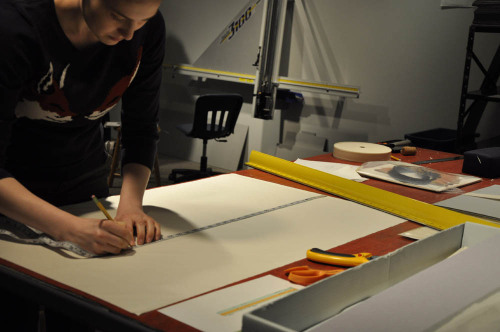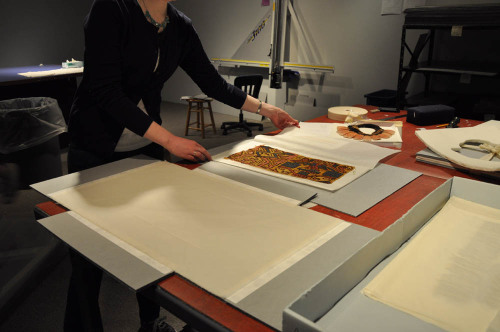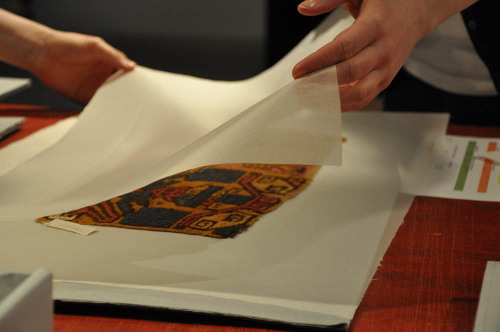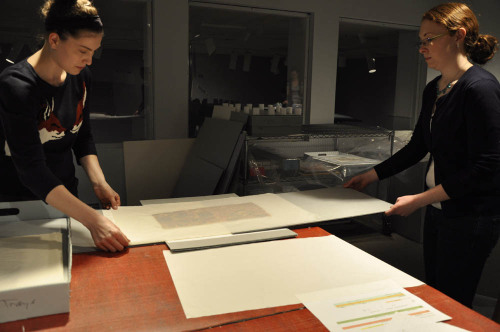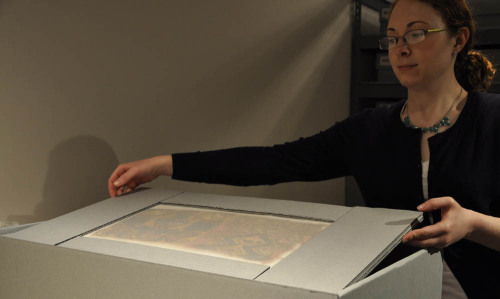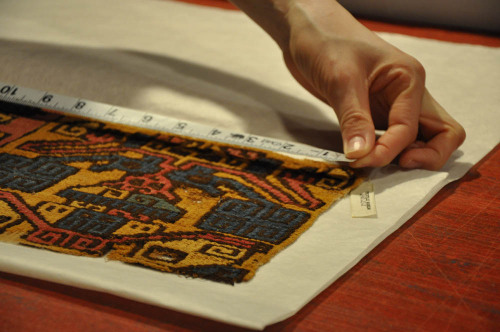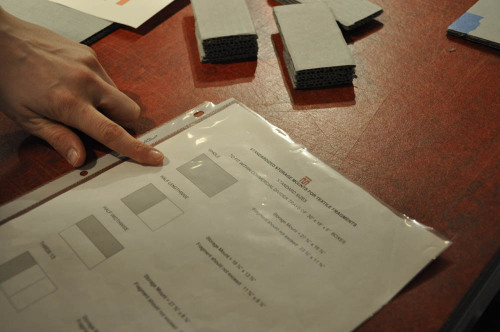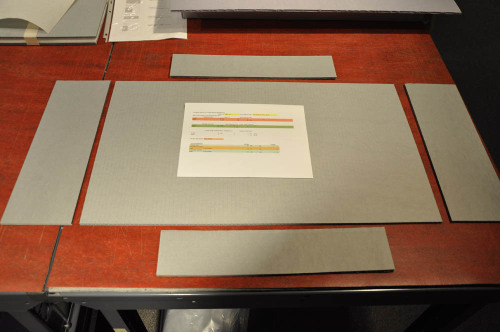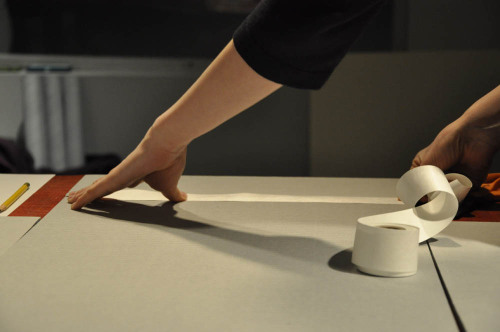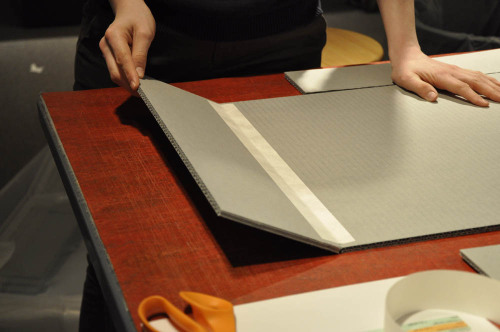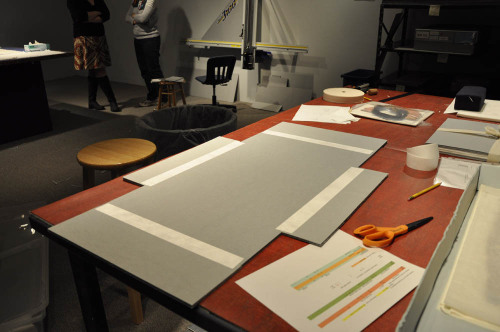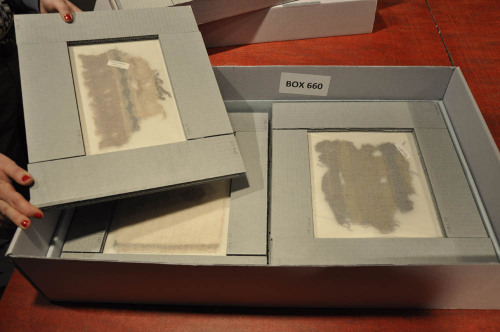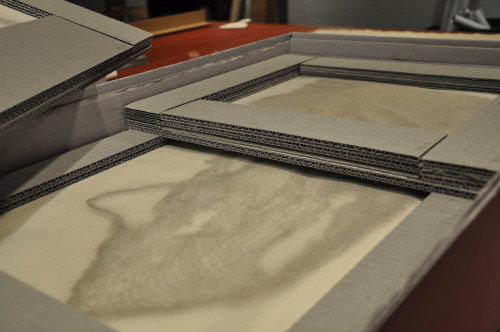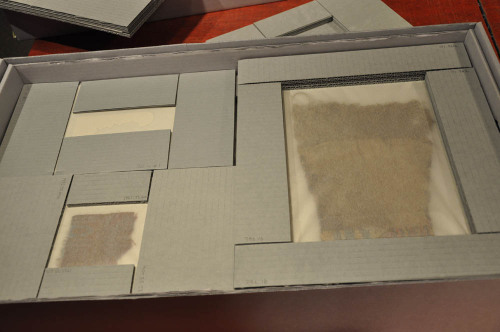#passive mats
Passive Mats (Part 3)
Now that the mat itself has been fabricated, it’s time to fill it! Here, collections management intern Christine Hogan cuts and and irons a piece of muslin that is the size of the base board, while intern Julia Grasso cuts out two pieces of tissue in the same size. The muslin will provide friction to prevent the tissue from slipping on the surface of the blue board.
Julia and Christine then place the object between the two pieces of tissue, using scrap board to support it. Next, they use scrap board to line up the object with the mat base board, and gently pull the board away, leaving the object and tissue aligned on the mat. Christine closes the flaps, ensuring that they do not come in contact with the object. Last, but certainly not least, they place the mat in an archival box so it can travel safely. Well done, ladies!
Post link
Passive Mats (Part 2)
In our last post, we explained what passive mats are, and why we are using them to store and transport fragile fragmentary textiles. Here, collections management interns Julia Grasso and Christine Hogan demonstrate the process from start to finish.
First, the textile must be measured. Based on their results, Julia and Christine determine that this piece needs the largest mat size for the selected box. They input the dimensions into a spreadsheet that calculates the hinging flap dimensions based on the size of textile and the size of the mat base board. Julia then cuts the base board and flaps, numbers each with the object number, and lines them up against the sides of the mat. Using Tyvek tape, she attaches the four flaps to the base board and ensures that they can independently hinge. The flaps of the mat are then opened to receive the internal elements of the mat.
Stay tuned to find out what happens next!
Post link
Passive Mats (Part 1)
The Textile Museum has a large collection of very fragile, flat archaeological fragments, some of which live in drawers and cabinets without any storage supports. In order to transport these textiles safely, our conservation department has prioritized housing them in new passive mats.
Made of archival blue board, the passive mat is a storage-specific mount with independently hinging sides that holds small, flat textiles. The object is protected between two pieces of archival tissue and passively held in place by the sides of the mat—which keep the object from shifting in storage or during transit without putting pressure on it. Because the sides are thicker than the textiles, the mats can be stacked on top of each other without any risk of contact.
Our passive mats are created in standard base sizes for three different box sizes (above), so they “puzzle piece” together inside a box—preventing the mats from sliding and shifting during transit. Some mats take up a whole layer, while others fill halves or quarters.
These mounts will not only keep objects safe for the move, they will ensure the pieces are easily accessible for staff and researchers in the future.
Stay tuned to find out how we construct these mounts!
Post link



